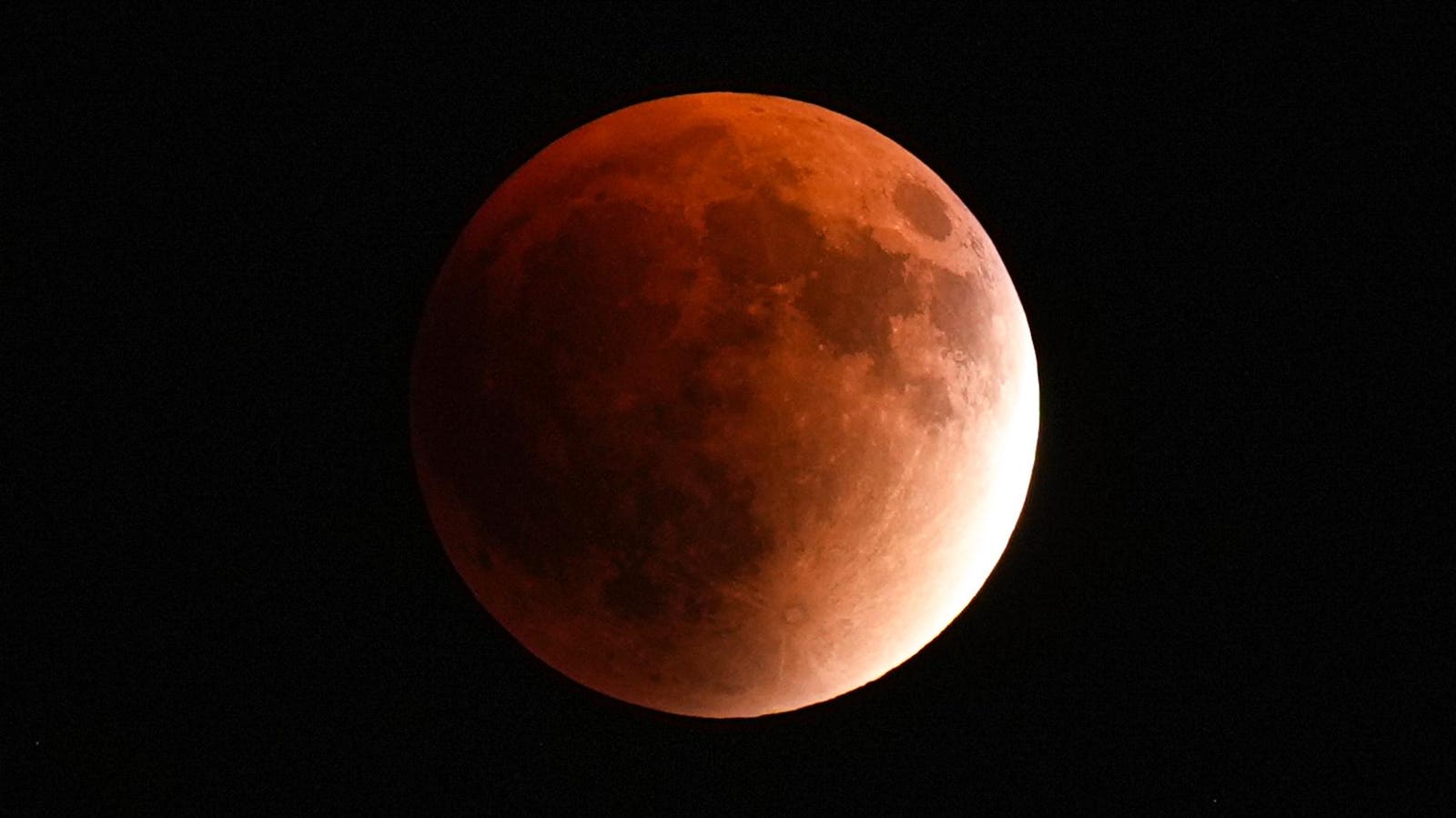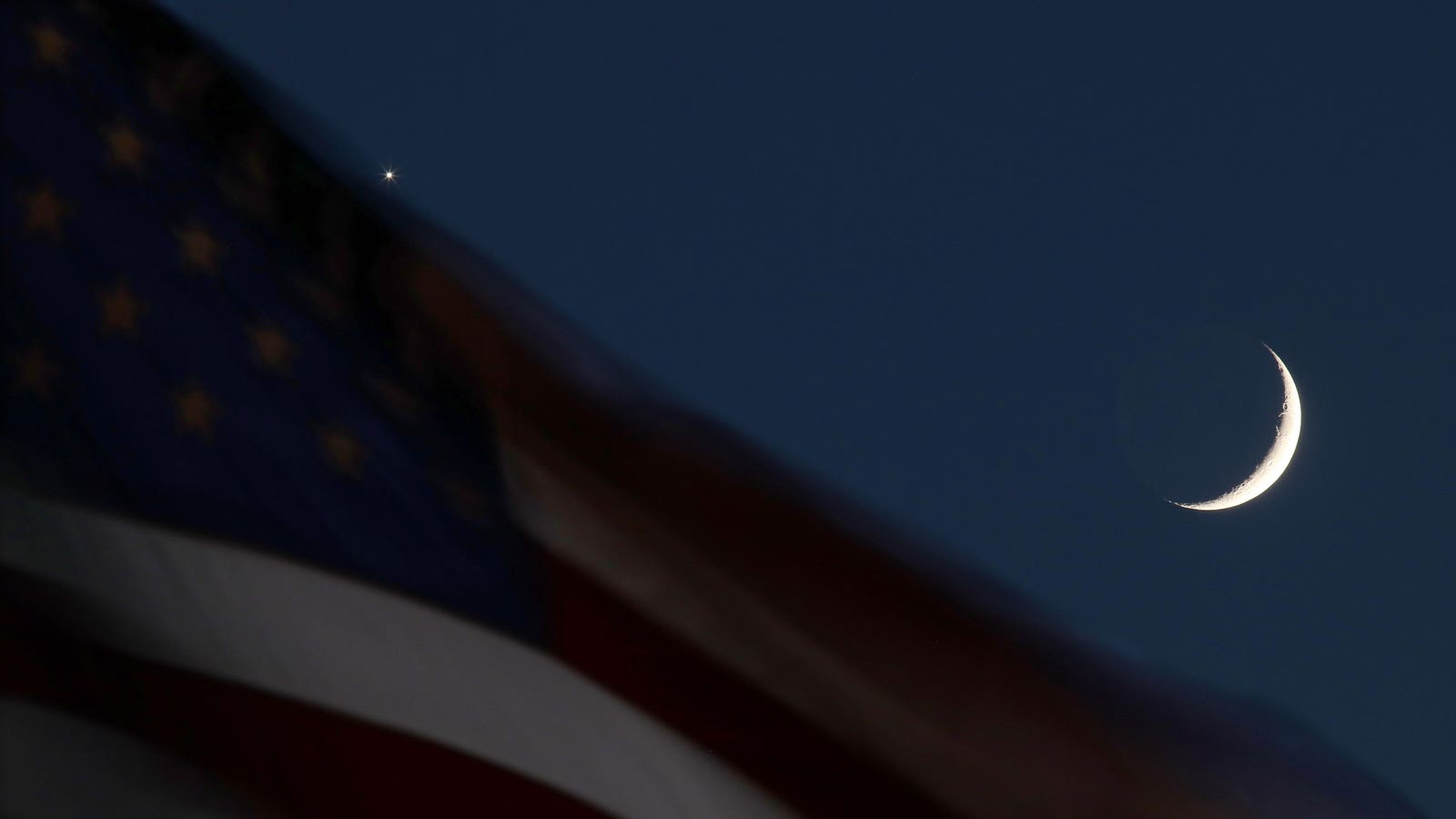Topline
September’s full moon lit up the night sky across the world overnight on Sept. 7, 2025, with half the globe also seeing the full moon totally eclipsed by Earth. Across Australia, Asia, Africa and Europe — not in North America — the full corn moon drifted into Earth’s dark central shadow, turning a spectacular reddish-orange color for 82 minutes. The alignment of the full moon with Earth and the sun also set up a deep solar eclipse on Sept. 21, 2025.
A red full moon, also known as a blood moon, is seen during a lunar eclipse in Sinop, Turkiye, on September 7, 2025. (Photo by Ercin Erturk/Anadolu via Getty Images)
Anadolu via Getty Images
Key Facts
The total lunar eclipse occurred between 15:28 and 20:55 UTC on Sunday, Sept. 7, 2025, with totality — when the lunar surface was a reddish-orange color — lasting 82 minutes. It was streamed live from Cyprus by TimeandDate.com, where it can be replayed.
From Istanbul, Turkey, to Sydney, Australia, via Tehran, Cairo, Cape Town, Nairobi, Beijing and Tokyo, almost five billion people live in the region where the total lunar eclipse was visible. It was glimpsed in the U.K. where the full moon rose in total eclipse, but with only a few minutes remaining.
On Sept. 21, 2025, a partial solar eclipse will be visible in the Southern Hemisphere. From New Zealand, up to 73% of the sun will be obscured at sunrise. It will also be visible from the South Pacific and Antarctica.
The partial phase of the total lunar eclipse in Sinop, Turkiye, on September 7, 2025. (Photo by Ercin Erturk/Anadolu via Getty Images)
Anadolu via Getty Images
Why A Totally Eclipsed Moon Is Red
The reddish (including orange and pink) colors are caused by Rayleigh scattering, the same process that makes sunsets appear red. Earth’s atmosphere filters out shorter wavelengths like blue and violet, refracting the longer red and orange wavelengths toward the moon.
A full moon, also known as the “Blood Moon,” is pictured above a minaret in Kuwait City on September 7, 2025. (Photo by Yasser Al-Zayyat / AFP) (Photo by YASSER AL-ZAYYAT/AFP via Getty Images)
AFP via Getty Images
Why Do Eclipses Come In Pairs?
Lunar and solar eclipses always come in pairs, sometimes threes, in successive new moons and full moons. That’s because Earth has eclipse seasons, a period of between 31 and 37 days every six months when lunar and solar eclipses can occur. That’s when the moon’s orbital path around Earth intersects the path the sun takes through the sky. The alignment typically creates one total eclipse and one partial eclipse. That’s the case this month, with a total lunar eclipse followed by a partial solar eclipse.
A full moon also known as “Blood Moon” is seen over Colombo, during a lunar eclipse, on September 7, 2025. Stargazers will have a chance to see a “Blood Moon” on Sunday night during a total lunar eclipse visible across Asia and swathes of Europe and Africa. (Photo by Ishara S. KODIKARA / AFP) (Photo by ISHARA S. KODIKARA/AFP via Getty Images)
AFP via Getty Images
September’s Partial Solar Eclipse
The deep partial solar eclipse on Sept. 21, 2025, will occur just one day before the southward equinox. From New Zealand, sunrise will reveal a crescent sun as the moon covers nearly three-quarters of its disk. In Antarctica, research stations like McMurdo will also witness a dramatic partial eclipse. The event will also be visible from the western South Pacific.
When Is The Next Total Lunar Eclipse In North America?
Last night’s total lunar eclipse was the second of three inside one lunar year (12 orbits of the Earth by the moon or 354 days), with the next one on March 2-3, 2026, visible from parts of North America. The lunar surface will turn a coppery-red to orange color for 58 minutes as seen from Australia, East Asia, the Pacific Ocean and North America. Those in western regions of North America will get the most optimum views, with parts of California, Arizona, New Mexico and Hawaii most likely to have clear skies.








